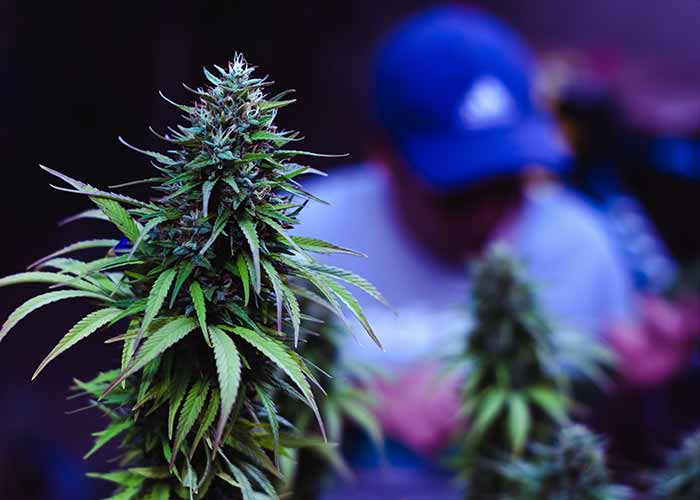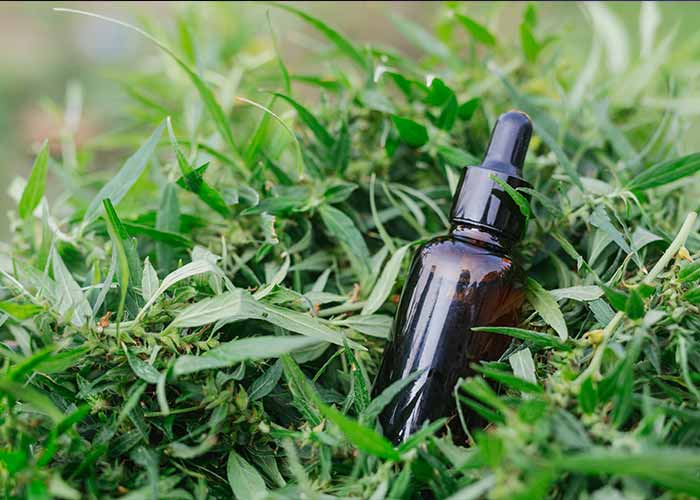Decisions, decisions! If you’ve ever visited a Green Goods dispensary, you know firsthand how many options you have when it comes to cannabis products: flower, concentrates, edibles, topicals, and others besides. But in today’s post, we’re going to focus on a higher-level question: What are cannabis strains, and how can I understand the different types of cannabis so that I select a strain that’s right for me?
Understanding the concept behind cannabis strains is one of the most important considerations when it comes to getting the results you want from this fantastically complex and varied plant. And whether you’re new to cannabis or an old pro, this cannabis strain guide will provide you with must-know information, answering such questions as:
- What are cannabis strains?
- What’s the difference between indica and sativa (and how much do these terms even matter)?
- How do compounds such as terpenes factor in?
- How do you choose strains of cannabis for specific outcomes?
…and others still. But trust us: It’ll all be worth it. By the time you reach the end, you’ll have information to help you make real-life purchasing decisions, get the results you’re looking for, and have the best cannabis experience possible. Because after all, that’s what we want for you here at Green Goods!
Are you ready? Let’s dive in.
What Are Cannabis Strains?
At the simplest level, a cannabis “strain” is a variety of the cannabis plant, with specific attributes such as cannabinoid and terpene profiles associated with it. You’re probably familiar with many strains of cannabis already, such as Jack Herer or OG Kush. No matter what form it arrives in—whether it’s flower, edibles, tinctures or any other kind of product—each and every cannabis plant can be categorized as belonging to a single, specific strain.

Cannabis strains are sometimes referred to as “cultivars,” meaning “a variety of plant cultivated to include specific attributes.” Just as there are different cultivars of tomato, such as beefsteak or Roma, there are different cultivars or strains of cannabis, such as Blue Dream or White Widow. While “cultivar” is a more commonly accepted botanical term than “strain,” here at Green Goods, we continue to use the term “strain” because it’s widely recognized and understood in the cannabis world.
What do we mean when we say “cannabinoid and terpene profiles”? In this case, a profile is simply the collection of active compounds—cannabinoids such as THC and CBD and terpenes such as myrcene and humulene—that distinguish one strain from another.
If you’ve sampled a variety of cannabis strains, you know that these differences can be quite significant, and strain names help keep them easy to understand. In the past, many of these differences were understood to come down to the distinction between “indica” and “sativa” strains. We’ll explain what these terms mean, as well as sharing more precise ways to think about different strains of cannabis.
The Meanings Behind Indica, Sativa, and Hybrid Cannabis Strains
If you’ve examined the packaging of a cannabis product—in particular fresh cannabis flower—you probably recognize the terms “indica” and “sativa.” First used by European botanists way back in the 18th century to describe cannabis plant types, these names referred primarily to the physical characteristics of cannabis plants. “Sativa” often referred to tall and more slender plants, often hemp, that was grown mainly in Europe and Eurasia for fiber and seeds, while “indica” was used to describe the plants with psychoactive properties grown in southern and central Asia.
These days, these terms are more commonly used to differentiate between the subjective effects of different cannabis strains. Sativa plants are often described as being “energizing” or “cerebrally stimulating.” By comparison, indica plants are often described as imparting a body-centered psychoactivity.

All that said, many—if not most—strains of cannabis available today are hybrids. That’s because cannabis breeders have crossed (or “combined”) different cannabis strains for specific outcomes, such as increased cannabinoid production or a unique terpene profile (a topic we’ll dive into in just a moment). It’s common to see hybrid cannabis strains labeled as “sativa-dominant,” “indica-dominant,” or “balanced.”
While we continue to use the terms “indica” and “sativa” here at Green Goods, they do have their limitations. As we mentioned, they’re oriented around botanical attributes rather than subjective or results-based ones. Let’s turn our focus instead to the compounds found within different types of cannabis—that is, the cannabinoids and terpenes that impart the plants’ experiential effects—in order to gain a better understanding of how they work.
Different Types of Cannabis: The Role of Cannabinoids and Terpenes
From our standpoint, the best way to understand how cannabis strains differ from one another is by assessing their cannabinoid and terpene profiles. These compounds are found in each cannabis strain in varying proportions, and their contents set different strains apart from one another. Let’s begin with the cannabinoids.
Cannabinoids are a family of more than 100 compounds found in the cannabis and hemp plants. As we referenced a moment ago, you’ve likely heard of tetrahydrocannabinol (THC) and cannabidiol (CBD). THC is responsible for the cannabis plant’s distinctive intoxicating “high,” but that’s not all. Studies suggest that THC may help relieve pain and may help treat insomnia. By comparison, CBD isn’t intoxicating, although some people describe a gentle cerebral “lift.” Thus far, clinical studies have demonstrated its potential in treating pain and inflammation, anxiety, and certain types of seizures, among other beneficial effects.
How these (and other) cannabinoids show up in a given strain makes a big difference in your overall subjective experience. That’s mainly due to the amount of THC, the cannabinoid most directly responsible for the cannabis plant’s characteristic “high.” In general, the more THC you ingest, the greater the subjective effects. That said, it’s important to know that more isn’t always “better.” As we’ve explored previously, many of us actually derive greater benefit from smaller amounts of cannabis and THC.
Then there are the terpenes—volatile compounds found in many plants and other natural products. Terpenes are aromatic and flavorful, which directly influences how a given cannabis strain smells and tastes. Researchers believe each strain’s terpene profile also influences your overall consumption experience.
Our understanding of this phenomena is still evolving, and comparing terpene profiles of one or more cannabis strains isn’t as straightforward as it might sound. For example, just because the Blue Dream strain’s dominant terpene is myrcene doesn’t mean all myrcene-dominant strains are as uplifting or energizing as Blue Dream.
Instead, it appears that it’s the unique combination of all cannabinoids and terpenes found within a strain that creates the unique experience associated with each one. Researchers are still examining the exact nature of this relationship, which is sometimes referred to as the ensemble (or entourage) effect.
Cannabis Strain Guide: How to Choose a Strain for Your Needs and Goals
A great way to begin selecting a strain is by considering your needs and goals. Are you looking for an energetic, creative experience that won’t leave your thinking cloudy? Or are you seeking a cannabis strain that will help you shed stress and anxiety after a long day?
This process can entail a little trial and error, since each person’s unique physiology will impact the effects experienced from any given strain. With that said, here are three popular strains that many cannabis users have identified as being particularly useful for specific outcomes.
Jack Herers: As one of the most legendary strains of all time—and one with a long backstory—Jack Herer is often described as imparting a “perfect blend” of cerebral and physical effects, inspiring a burst of creative energy and focus that make it popular for daytime use. You’ll probably recognize the flavors and aromas of earthy pine, thanks to its high pinene content!
Granddaddy Purple: This indica-dominant strain tends to impart body-centered, relaxing effects and its high THC content delivers a notable and potent euphoria as well. These effects have elevated Granddaddy Purple to renowned status in the medical cannabis world, where it’s known for its ability to help quell stress, anxiety, sleeplessness, and chronic discomfort.
Blue Dream: Without doubt one of the most popular strains ever produced, Blue Dream is renowned for its classically sativa-like cerebral effects. People love its uplifting yet relaxing psychoactivity along with an energizing euphoria. Many also report that this strain is effective in boosting mood, relieving discomfort and stress while improving appetite.
Find the Right Strain for You With Green Goods
We hope today’s post inspires your curiosity about cannabis plant types and what differentiates them from one another. If you’re interested in trying some of them for yourself, we can help! Start by finding your nearest Green Goods location to learn about the cannabis strains we currently offer.
Our team can help you navigate the many strains we carry to help you find something that helps support your general health and wellness or meet specific needs and goals. And if you have any other questions about strains of cannabis—or any other cannabis-related topics—we’re always here to answer your questions. Drop us a line!
